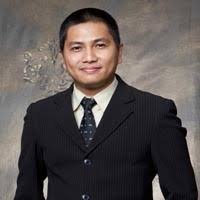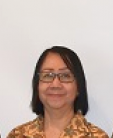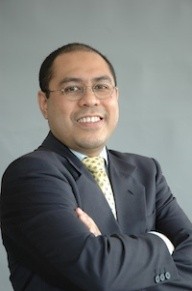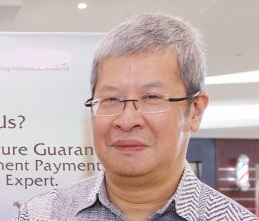Case Document
KAWASAKI NINJA 250R: HEADING TO SUCCESS THROUGH PRODUCT STRATEGY, BLUE OCEAN AND BRAND LEVERAGING
The case describes about the success of the launching Kawasaki Ninja 250R. It’s a power sports motorcycle. Since its first generation, the Kawasaki Ninja had been known to satisfy the passion for a power sports motorcycle, and the launch of the Ninja 250R was to reaffirm that symbol. With developed technology, it was proof of PT. KMI’s consistency in producing quality products.
There are several things that can be learned from cases of Kawasaki Ninja 250. First, this case illustrates how the Kawasaki Ninja been able to capture market opportunities in motor sport. In this market niche has been no single manufacturer who issued the motor sport with a relatively affordable price. Second, Kawasaki managed to exceed even the products that fit market expectations. Consequently on the third point, Kawasaki successfully applied the blue ocean strategy by releasing a product that resulted in competition becomes irrelevant. From this success, the mother brand benefited as leverage by the Kawasaki Ninja 250.
SPREAD THE WINGS, CHALLENGE THE GIANT : BLITZMEGAPLEX VS 21 CINEPLEX
Drizzling rain at that morning had not subsided since last night when Mrs. Wendy Soeweno, director of marketing Blitzmegaplex drove her car into the office parking lot. She walked to her desk and prepared meetings with the marketing team of Blitzmegaplex. That day, two days before the meeting with the board of commissioners and board of directors, in the meeting room located at Jalan Patra Kuningan VII No.14 Jakarta Selatan, Blitzmegaplex marketing team led by Mrs Wendy Soeweno has prepared the data, both internal and external company to determine their future strategy.
Meetings were accompanied by faint sound of rain that lasted a serious but relaxed. The marketing team Blitzmegaplex expressed their own opinions, debate and argue, what company should to do after reporting 21 Cineplex to KPPU on June 5, 2009? Whether the decision was the right action in the face of the major competitors Blitzmegaplex? What was about the rest of their strategy in dealing with counter-attack of 21 Cineplex? No less important was the other competitors either directly or indirectly, which also would influenced the existence Blitzmegaplex in the cinema industry in Indonesia.
PT NYONYA MENEER: SURVIVING THE TRAGEDIES, LEADING TO SELF GOVERNANCE
One day in late October 2000, Charles Saerang sat in his office, reviewing the family conflicts and tragedies in the history of P.T. Nyonya Meneer. He is the third generation of the Meneer family and now fully controls the company. Charles reexamined the old Chinese saying that the first generation builds a company, the second generation expands it, and the third destroys it. He swore to himself that he would not let this happen. He wanted to turn the Nyonya Meneer into a world-class traditional medicine company and bring greater pride and welfare to its stakeholders. At this time Charles began with the idea of restructuring the company’s organization to have a structure that can accommodate and maintain a better relationship between the family, shareholders and the management in the future, while at the same time reflect the family’s governance.
GROWING TOGETHER IN PARTNERSHIP: THE CASE OF UNILEVER AND THE BLACK SOYBEAN FARMERS IN INDONESIA
KORINDO HEAVY INDUSTRIES (B)
The redesign of the company was approved by the principals of the Korindo Group. The total investment was over USD 40 million; 33 million was allocated to equipping and redesigning the facilities, recruitment of necessary manpower, and the installation of new systems. The rest of the funds were allocated to the establishment of organizations that would support the operations of KHI. These organizations represent companies operating alongside KHI under the Korindo Group such as Korindo Motors, a distribution company, and Clemont Financial, a leasing company.
The second part of the case will show how Korindo Heavy Industry formulated and executed the new strategy of entering the automotive industry. Having a new vision and mission is important to communicate how the new company would be. It is also important to understand how the new vision was to be implemented.
KORINDO HEAVY INDUSTRIES: SETTING A NEW DIRECTION (A)
In his new office at the Research and Development Division of PT Korindo Heavy Industry (KHI), Mr. Miet Sugiarso, the newly-appointed head of Research and Development, pondered about the challenges that he and his associates would have to face in the months ahead. He had just been in another meeting with the Board of Directors of KHI regarding the development of KHI’s newly formed automotive manufacturing division.
Several months before, sometime in late 2005, Sugiarso, along with his co-workers and friend, Puryanto, were invited to the offices of Korindo Heavy Industry by the company’s Board of Directors and offered positions to lead the development of a new business division for the manufacture and assembly of commercial vehicles. However, the company had never been involved in any project that was remotely close to automotive manufacturing.
Korindo Heavy Industry had been originally established to handle some of the manufacturing projects of the Korindo Group, a business conglomerate under which KHI operates. Originally, the Heavy Industry’s main business operation involved the manufacture of containers for shipping and transportation purposes. Within this industry, KHI prospered for nearly a decade before eventually being forced out of business due to competition from Chinese container manufacturing companies, as well as other external factors.
As the company declined, its directors began formulating plans to change the company’s core business towards more profitable ventures, which they hoped would be able to bring the company out of its current predicament, as well as provide them with new opportunities for growth. After much deliberation, the board of directors eventually decided to enter the automotive industry. A new course had been charted; what was needed next was to set the foundations for a successful take-off. The responsibility was offered to Sugiarso and his co-worker Puryanto, both of whom, had extensive knowledge of the automotive industry. They accepted the offer seeing it both as an opportunity and as a challenge, though, they realized that it would not be easy.
Korindo, having no prior experience in the motor the automotive industry meant that the company was ill-prepared to face the challenges of the new venture. Container manufacturing and motor vehicle manufacturing were completely different from each other. Many of its processes and systems would have to be rebuilt in order to meet the more stringent requirements of motor vehicle manufacturing. Furthermore, they faced the challenge of entering an industry that was already dominated by other more mature, and experienced players like Mitsubishi, Toyota, Hino, and others.
Meanwhile, there were pressures, from the Board of Directors, for the automotive manufacturing division to quickly begin its operations and to introduce and launch their first product within the next 6 months. Before that, Sugiarso and his team would have to first set up a working system as well as address critical issues such as a market penetration strategy, along with competitive strategies for their new products.
WIJAYA KARYA (WIKA): DIVERSIFICATION STRATEGY
WIKA started the business from electrical and pipe-installation for houses and buildings, they realized that WIKA would not become a big-corporate if only relied on electrical-business. Now, WIKA’s projects are various from high-rise building, fly-over, toll-road, railway until solar water heater (SWH) and LPG tank. Also WIKA becomes a producer of automotive-component. This was different with other State – Owned Company which usually avoid diversifying from its core-business. The latest diversification was entering the Engineering Procurement Construction (EPC) – business where they believed this would be a future business for WIKA, after preliminary study in 2002, the management decided to enter this high-technology business.
The company plans to acquire toll-road operators as well as engineering consultancy company WIKA claims it has built approximately 30.0% of government-owned 10,000-MW power plant projects. The company plans to acquire a 70.0% stake of PT Catur Insan Pertiwi (CIP), a mechanical engineering and engineering consultancy company specializing in power plants. Going forward, WIKA also plans to acquire toll-road operators and mining contractors, apart from its plan to enter international market. It looks very busy of diversification. What strategies will be implemented to reach the goals? What opportunities and challenges will be experienced by WIKA after diversifying its business? How best could WIKA execute its diversification strategy?
BNI INTERNET BANKING: GO OR NOT GO?
Sabdo Trihidayat, General Manager of Consumer Funds and Financial Services Division (DJK-Division) also known as Pak Dody at BNI, as one of Consumer Business Unit after the change of corporate organization structure into the SBU-BU model in 2004 that forced each Business Unit to race with other business units in increasing its performance and compete with rivals as stated on the vision and mission. Before the change of BNI’s organizational structure, there was an Internet-Banking team had created the blueprint of the project and had to postpone as consideration in avoiding the unwanted conflict impact while the IT-Division was implementing the core-banking project in 2005.
In looking forward, to increase market penetration, product development of BNI TAPLUS had been enhanced with a communications marketing program for both above and below the line, to sharpen awareness while communicating advantages on product features and services, stressing their consistency and security. Following market development and technology advances, innovate e-channel products and features (both financial and non-financial) should had been integrated into BNI Internet-Banking. BNI had completed its four e-channel services: ATM since 1990, Phone-Banking since February 1998, M-Banking since 2002, and the SMS-Banking launched on April 4th, 2006. Sabdo Trihidayat faced the situation whether he had to take BNI on Internet-Banking in case of completing the five e-channels and decided whether it was the right time to bring BNI go Internet-Banking and implement the project right after the launched of BNI SMS-Banking?
PT. HOLLITECH: USING INTELLECTUAL CAPITAL TO WIN CUSTOMERS (PART A)
Stefanus Mulianto, Director of PT. Hollitech, was proud of the achievement of PT. Hollitech since the day it was founded. He had reasons for that since his company was the only company that successfully developed applications software for the garment/apparel industry in Indonesia. The latest achievement was shown in late 2005 when the company acquired an Indian IT company. Over the past four years Stefanus Mulianto had been responsible for managing the operations of company as well as its human resources. Once an IT department of a textile/garment conglomerate, PT. Hollitech had grown into a medium-sized international IT services company delivering various solutions to financial institutions, garment, and hospitality industries. Innovation, quality and on-time delivery of IT solutions had always been part of the strategy that Stefanus Mulianto believed was the key driver to PT. Hollitech’s success.
GRIN: INDONESIAN EXPANSION
It is January 19, 2007, Ulf and Bo Andersson is pacing agitatedly about his hotel suite, located in the business district of South Jakarta. He is both excited and a little bit apprehensive about the decision he has soon to make. Bo is currently on a trip to Jakarta in search of a location for a sister office to expand GRIN, the company founded by Bo and his brother, Ulf Andersson. GRIN is a game development company based in Stockholm, Sweden which focuses on making games for the PC (Personal Computer) platform. The company’s latest hit,‘ Tom Clancy’s Ghost Recon: Advanced Warfighter’ (GRAW), published by Ubisoft Entertainment, has won reviews and awards worldwide. Bo, in his quest for a suitable office/studio location outside Sweden, is hoping that the new sister office will strategically support the main office in Stockholm in producing the next generation of games.
Looking out from his hotel suite, immersed in thought, Bo gazes at the huge sports complex across the street. The decision to expand won support from his brother and some people at GRIN, but choosing the location will be critical since it will mean a sizeable investment for the company. Prior to the trip to Indonesia, Bo considered the Baltic States in Eastern Europe, China, and India as potentially favorable locations. A merger with another game development company in the United States or Sweden is also an option for the expansion. Whatever the decision, the expansion is needed to acquire the necessary creative talent in building the next generation of AAA games (triple A: multiple platform games; games developed for multiple platforms, e.g.: PC, Sony PlayStation, Microsoft Xbox).
Within the past few days, in search of market opportunities and talent, Bo has met with game developers, universities, and even found potential office space in the central business district of Jakarta, all with the help of a Swedish acquaintance with years of experience doing business in Indonesia. The office space is located in a tower adjoining a shopping mall.
Bo turns his head and looks at the DVD disk sitting innocently on the coffee table. The disk was sold to him the day before in a software store at the shopping mall in a flimsy plastic sheet with a poorly printed paper-insert depicting the contents of the package. Bo bought the disk for 50 thousand Indonesian Rupiahs, or approximately 5 US Dollars. The paper-insert was printed from a scanned packaging of GRIN’s latest hit, Ghost Recon, and Bo purchased this pirated copy of the game his company developed at a fraction of the cost the publisher of the game sells it for elsewhere (Exhibit 1 shows packaging of pirated software). The store not only carries PC games, but also productivity applications, operating systems, software development tools, and other office/business software; basically any category of software a person would ever need. In that particular shopping mall, there are at least 3 other stores selling pirated software, and other small stands/kiosks selling pirated DVD movies and CDs (Exhibit 2 shows the typical software store). Jakarta seems to be a good location for finding talent; but Bo wonders whether the city is the right location to expand his company and develop the capacity to compete in the future.






